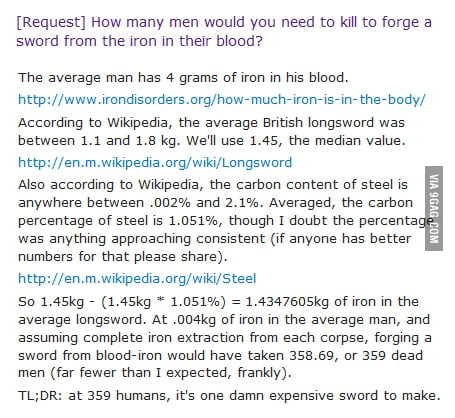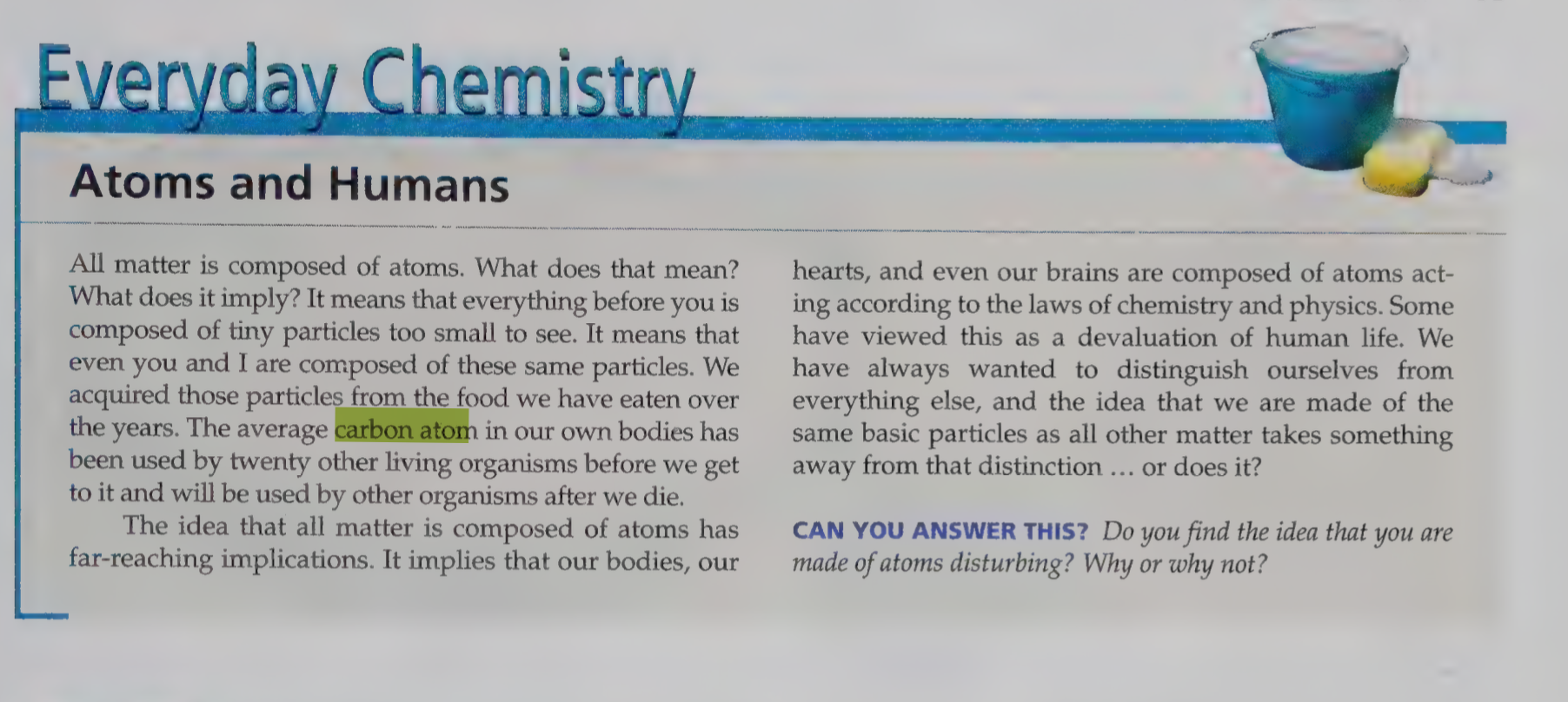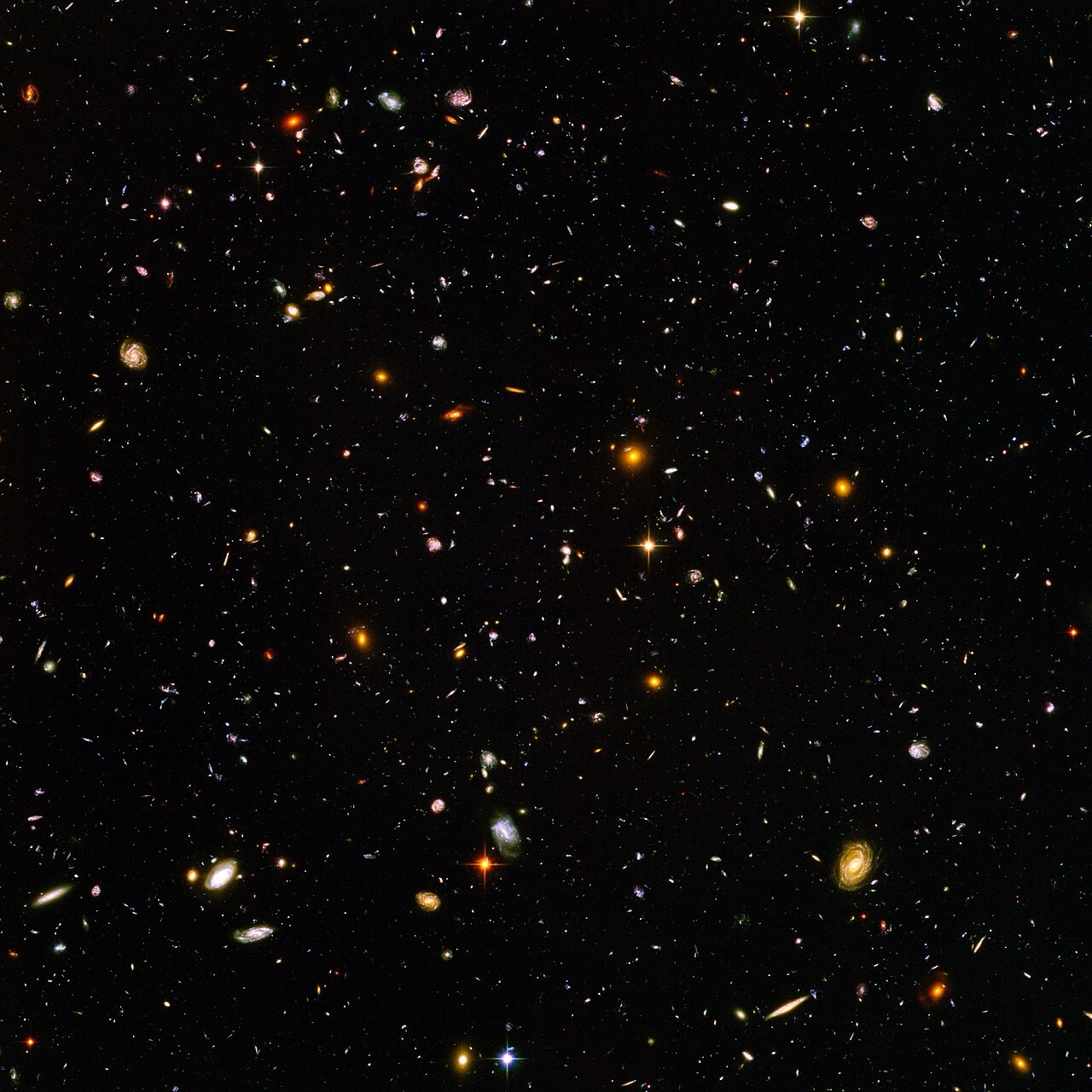95% of our DNA is basically useless gibberish. Since the evolutionary incentive to shorten it is so small in our case, all sorts of processes “hijack” it to propagate themselves without giving anything back.
Just like my codebase.
Recent studies have it at closer to 92% ‘junk’ DNA, and 8% actively coding.
Also, a lot of non-coding DNA does actually serve other useful functions, it just doesn’t actively code.
It could play a role in epigenetics, ie the regulation of what active coding sequences are active and when, it could be telomeres that prevent DNA strands from unravelling at the ends, it could be binding and scaffold sites that assist in the structural stability and integrity of the chromosome.
DNA can be functional, without being active-coding.
Only regions that are both non coding and also totally non functional are truly ‘junk’, but we keep consistently finding more ways that ‘non functional’ regions are actually functional.
8% coding DNA? Wow, that’s quite a jump from the 2% coding and 5-10% conserved DNA that used to be cited. Full-genome sequencing has truly (metaphorically and literally) filled many gaps in the study of our genome…
The fact that planes are kept in the air by the shape of their wings, which forces air to go over at a pace when it can’t push down on the wing as hard as it can push up from underneath. It’s like discovering an exploitable glitch in a videogame and every time I fly I worry that the universe will get patched while I’m at 10,000 feet.
I mean, it’s not something for nothing. You still get drag at least matching lift to conserve energy.
Tbf, you can make anything fly if you give it enough thrust. Wings just make it easier.
In a sense, everything can fly. Just sometimes not for very long.
Except bees. Engineers reckon they shouldn’t be able to fly, but bees told them to get fucked and do it anyway
BEHOLD THE CUBE PLANE
You joke, but lemme introduce you to Tacit Blue:

Yes, this thing did actually fly.
Stealth demonstator aircraft from the early 80s.
How do we stop radar? By obliterating the air around us with cube. Lol
That is actually pretty neat though!
Like someone flipped a bathtub over and made it fly.
I remember reading a couple years ago that’s not actually how plane wings work. The actual way is much more complicated and hard to explain and hard to teach, so they just teach it this way because its an intuitive mental model that is “close enough” and “seems right”, and it really doesn’t matter unless you’re a plane wing designer.
The false thing they teach is that air has to go over the longer side faster. Actually, it’s under no obligation to meet back with the same air on the other side, and doesn’t in practice. The real magic bit is the corner on the back, which is not aerodynamic and “forces” air to move parallel to it (eventually, as the starting vortex dissipates).
The pressure difference from different volumetric flow speeds is real, it’s just not that straightforward to produce, because air mostly does whatever it wants. A lot of aerodynamics is still more art than science, and it’s even possible the Navier-Stokes equations it’s based on fail under certain conditions.
Yes, this is what I was thinking of, thanks for filling us in.
The basic way an airplane works actually is simple and intuitive: it meets the air at an angle and deflects it downward. The equal and opposite reaction to accelerating that mass of air is an upward force on the wing.
There is, of course a whole lot of finesse on top of that with differences in wing design having huge impacts on the performance and handling of aircraft due to various aerodynamic phenomena which are anything but simple or intuitive. A thin, flat wing will fly though, and balsa wood toy airplanes usually use exactly that.
https://en.wikipedia.org/wiki/Lift_(force)#Simplified_physical_explanations_of_lift_on_an_airfoil
“With a big enough engine you can make a barn door fly.”
There are more hydrogen atoms in a molecule of water than there are stars in the solar system
Not just that, it’s twice the amount!
🤣 in Solar system only one star… the Sun! Go to school!!!
so it’s right
it was a stupid and meaningless statement… 🤣
🤔 2 hydrogen atoms in one molecule, 1 sun in our solar system 🤔
fuck.
Every 60 seconds in Africa, a minute passes
Correspondence of lovers: He: darling, without you 60 minutes seem like one hour to me! She: I love you so much, wow he is such a romantic!
Something should be done about this
Stop fucking clapping then
A shotgun
…? … Oooooohhh. Haha that’s some fine gallows humor.
That time passes differently in galaxies with different gravities. One of these galaxies is Mormon heaven.
Wait what
Gravitational time dilation is an effect of Einstein’s General Theory of Relativity. Places with stronger gravity would then have time pass more slowly compared to earth. The opposite is also true.
I think it’s the Mormon bit that’s being questioned.
Kolob is a planet or star where God resides. Time moves very slowly there. Hence the high gravitational field. Probably because God is massive. I don’t know. I’m not a Christian scientist.
Ironically Christian Scientists are actually a distinct sect/cult of US Protestant Christians and would be very angry at the Mormon idea of Kolob if they heard about it.
They also put out a pretty decent newspaper The Christian Science Monitor. At least they did 30 years ago. They don’t take much medicine either, which, fine I guess.
The problem is that they will tell people to pray away cancer, that diseases and injuries and such can be healed spiritually.
That means you can end up with kids who need actual medical help, and won’t get it, and will then be told that they’re sick because they didn’t pray hard enough, that their soul is impure and that’s why they’re sick.
…wtf?? How do you have negative one downvote?

This fact blows my mind the most.
I saw that recently too. There’s some bug somewhere.
If you downvote it it goes back up to zero and everything.
Lemmy Easter egg. Gives access to Bizzaro Lemmy. They get a mustache. That’s it.
You can observe the chirality of some molecules from the crystals they form, sometimes they twist clockwise, other times they twist counter clockwise. Which way they twist is dependent on their molecular structure.
In chemistry I was taught one carbon atom can exist in at least 12 separate living bodies before it’s no longer stable.
As you established that is not true, however you can add some of that carbon from some body and add it to the iron from the blood of 400 other human bodies so you can forge one nice sword.

Holy shit lol. This is amazing!!!
Unrelated: Anyone want to hang out? I’m planning a party. Should be enough space for about 400 people.
Hon I think you maybe misunderstood your chem class.
Carbon is carbon is carbon and doesn’t know or care if it’s in a living body.
Carbon-14 has a half life of 5700 years. This means that through random decay, the approximate rate of decay is one half of a given amount every 5700 years, this of course breaks down when you reach the single-digit quantities of atoms.
Now, this has nothing to do with the stability of an atom of regular-ass carbon-12, your common garden variety carbon, which is extremely stable and would require outside influence to decay into another isotope.
Ahhh I misremembered. It was this “The average carbon atom in our bodies has been used by twenty other organisms before we get to it and will be used by other organisms after we die.”

It’s been six years since that class.
ah, yeah. that makes more sense
What does that mean?
After you die, the carbon atoms that made you might go on to make another living thing.
that doesn’t make any sense. Carbon doesn’t get less stable by being used in bodies.
Carbon 14 exists, but that decays regardless if it’s in a body or not. At has quite a long half life
At least is a heavy lifting qualifier in this case.
That our species took millions of years of evolution and the chance for it to be exactly this way was so infinitesimal… And yet here we are, chasing arbitrary numbers on paper-slices and in some bank-account while also being sexists, racists, whatever-ists and destroying the very rock we exist on. Yet things like star trek are called utopia not actual-ia.
This always baffle me.
Yes, but have you considered [INSERT OUTGROUP] are bad? /s
To play devil’s advocate, considering that in evolutionary terms we just left the trees now, we’re doing okay, honestly. I just don’t know if it will be enough.
If you’d consider this broadly points at everything “ok”, I’d frigging fear your “moderately bad” 😁
Moderately bad would be, for example, getting stuck in the agrarian neolithic for geological time because every significant technological advance leads to a devastating social collapse that wipes it away. If farming is already a new thing to the species, why shouldn’t we struggle just to keep it going at a basic level?
I mean, technologies getting lost did happen all the time, and social progress basically didn’t exist until recently. But, progress eventually came. By the 20th century there was little anyone from the paleolithic would recognise in Western life, but we adapted, with only a few health and demographic problems to show for it.
Besides my point being not totally serious, you’re right. Technically. Yet big changes were always at the doorstep and could happen. I just highly doubt the current capitalism-era could ever end. There might be tiny revolts here and there, but there would be so many concurrently happening events needed it seems impossible. Also there’s no viable alternative. At least none everyone sees. Anyhow, I’d say it’s a bit too complex for a discussion in text-form.
Hah, I actually make a lot less sense when not in text form. I can write, reorder and edit a bunch on here. IRL my very first communication idea comes out, and it’s stupid.
I know this is .ml, but I don’t really expect a global revolution either. Then again, the UK never had a (successful) revolution, and their monarch is just a figurehead at this point, so I still expect change, good or bad.
There are more stars in the visible universe than there are grains of sand on all the beaches in the world.
The size of the universe and the distance between everything in it. It takes about 8 minutes for light from our own sun to reach us. And the observable universe is about 5,859,000,000,000,000,000 times larger than that! That is quite a trip. I would need about 293,283,000,000,000,000,000,000,000 charging stops with my electric car to get to the end. I think I’ll pass.
It’s so absurdly big. Our galaxy (the Milky Way) is estimated to have between 100 and 400 billion stars in it. For a long time we thought our galaxy was all there was, it wasn’t until 1925 when Edwin Hubble was able to prove that M31 was not a nebula or cluster of stars in our galaxy, but in fact an entirely different galaxy altogether that we realized there are more galaxies out there.
Look at the Hubble Ultra Deep Field picture

This was a taken by pointing the Hubble Space Telescope at a basically empty bit of space 2.4 by 2.4 arcminutes in size (for comparison, the moon has an apparent size of about 30 arcminutes, or half a degree). So an absolutely tiny part of the sky. It contains about 10.000 galaxies.
The observable universe is estimated to have between 200 billion and 2 trillion galaxies in it, with on average about 100 billion stars per galaxy. It’s absolutely mind blowing.
What I find mind blowing about the scale of the universe, is that on a logarithmic scale from the smallest possible thing to the largest possible thing, humans live at almost the exact centre.
Awesome!
I dunno whether it counts: but that science has effectively cured AIDS.
In 2004, 2.1m people died from it. Twenty years later that figure was a little over a quarter at 630k. The goal for 2025 is 250k. I think that’s absolutely remarkable.
As a child in the 80s I was terrified of AIDS. It made me low-key scared of gay men because the news made it sound like I could I could get it from any one of them. And here we now are, able to provide a medication that can almost completely ensure that you will never be infected by HIV.
Astonishing, really.
Yeah.
There’s waaay worse things you can catch.
I’m terrified of going into lakes and rivers because of what might find its way into my skin.
OK, it’s really a mathematics equivalence, rather than a scientific fact, but Euler’s Identity:
eiπ + 1 = 0
https://en.wikipedia.org/wiki/Euler's_identity
it shows a profound connection between the most fundamental numbers in mathematics.
The fact that there is no discernable difference between an alive body or a dead body when it comes to chemical makeup.
All the pieces are there. All the atoms and molecules are still in the same places. Yet despite this the body is still dead.
@ThatWeirdGuy1001 That’s because it’s not only ingredients that are important but order, relation and interaction between them also is. Hypthetically, in terms of *elements*, in a closed system, the engine that has burned through its fuel is no different than a freshly fueled one. But the engine has reordered them in order to extract some energy. So they are not chemically the same, strictly speaking.
When you say “All the atoms and molecules are still in the same places”, I can’t say I agree. It is the change of chemical composition that renders our body dead. Or should I say, death is defined to be such a chemical composition.
yes, the same atoms are still there, but all the chemical processes in our body have stopped.
To be fair, a perfectly fine but dead body is impossible to observe since the process of dying is usually the result or accumulation of injuries or disfunctions. For this experiment you either have to kill somebody without altering their body in the slightest or instantly conjure a perfectly intact body without any life in it.
Retinal photosynthesis, also known as the Purple Earth Theory. Colours are weird. Earth plants absorb red and blue light, they look green to us because that’s the wavelength of light that cannot be used by the chloroplasts.
It’s hypothesized that this was advantageous on Earth because blue light goes further into water than the other wavelengths, facilitating the development of photosynthetic algae
Retinal photosynthesis is another viable chemical chain reaction that could be used to create ATP (usable biological energy) from light.
It’s another molecule similar to chlorophyll, but it absorbs green light instead of red/blue - alien planets might be purple!
There’s a viable parallel evolutionary pathway that leads to plants with magenta leaves
alien planets could be purple
So the prophecies are true…
So humans vision is much more sensitive to green than other colors. it’s why camera sensors are 50% green 25% red 25% blue. Which makes sense as being able to detect small differences in plant cover is useful in both detecting predators and prey.
https://en.m.wikipedia.org/wiki/Bayer_filter
If humans had more flat color detection range we woulda actually be able to see that the sky is purple and not blue.
Actually, there’s some contradicting evidence that came up recently-sh. If you factor in the challenge of not being fried by the very incoming light you need, every photosynthesiser is about the right colour for it’s environment.
By that, alien planets would be coloured depending on their star type, and the ancient cyanobacteria of Earth were probably green too.
the implication of einsteins mass-energy equivalence formula is mind-blowing to me. one gram of mass, if perfectly converted to energy, makes 25 GWh. that means half the powerplants in my country could be replaced with this theoretical “mass converter” going through a gram of fuel an hour. that’s under 10 kilograms of fuel a year.
a coal plant goes through tons of fuel a day.
energy researchers, get on it
If mass can convert into energy that easily then we’re all in a lot of trouble…
What do you think fusion research is?
Studies into how to make a more efficient kettle.
There’s a possibility of using the plasma directly for inducing electrical current, actually.
But then yeah, probably steam with whatever’s left.
I mean, you’re not wrong… XD
a fun fact: for the most efficient mass energy conversion, you need a huge spin black hole (preferably naked). Then you can get about 42% conversion. (there was a minute physics video about it i think)
No where near perfect mass conversion…
Max theoretical mass-energy conversion efficiency is under 1%
that’s still waaayyyy more efficient than coal
That is a different level entirely.
The mass-energy conversion from chemical processes is extremely small compared to nuclear processes, you can’t really compare the in any meaningful way
yes you can. coal costs ~32 cent per kWh, and uranium ~$0.0015 per kWh
We were talking about the mass-energy conversion, for nuclear fusion.
Not really sure how nuclear fission Vs coal cost/kWh is relevant.
15 years away from a useful result
Just a fancier way to spin turbines with steam
Existing nuclear energy, too.
Because this is a science thread I’ll be a bit pedantic. Mostly because I think it’s an interesting topic. It’s a mass-energy equivalence (≡) and not just an equality (=) they are the same thing.
So it’s meaningless to say convert mass into energy. It’s like saying I want to convert this stick from being 12 inches long to being 1 foot long.
You can convert matter (the solid form of energy) into other types of energy that are not solid. But the mass stays the same.
It’s like when people say a photon is massless. It has energy and therefor mass. It just has no rest mass. So from the photos frame of reference no mass but from every other fame of reference there is mass.
thanks! love me some science pedantry.
Yep. The Higgs field interacts with matter, both holding the waves it’s made up of “in place” so it can seem macroscopically like it’s not a wave, and carrying a bunch of energy.
There’s also mass-energy just in the very fast and powerful internal movements and fields of the nuclei and the individual protons and neutrons (which are made of gluons and quarks). Not sure about the breakdown off the top of my head, though.
If you blew up an atomic bomb in a magically indestructible sealed container, it would stay the same weight, just with a noticeable contribution from pure electromagnetism now.
Neat. I know almost nothing about the the Higgs field.


























